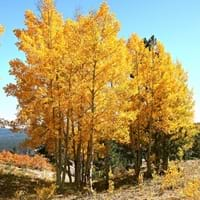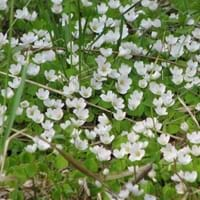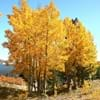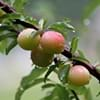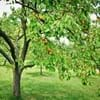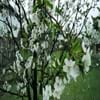Life Span
Perennial
Perennial
Origin
North America
World, Pandemic, North America, Europe, United Kingdom, Asia
Types
Not Available
Not available
Habitat
Forest margins, gardens, Roadsides, Woodlands
Shaded sites, Woodlands
USDA Hardiness Zone
1-8
3-8
Sunset Zone
A1, A2, A3, 1a, 1b, 2a, 2b, 3a, 3b, 4, 5, 6, 7, 14, 15, 16, 17, 18, 19
A3, 1a, 1b, 2a, 2b, 3a, 3b, 4, 5, 6, 7, 8, 9, 10, 14, 15, 16, 17, 18, 19, 20, 21, 22, 23, 24
Habit
Upright/Erect
Mat-forming
Flower Color
Not Available
White, Light Pink
Flower Color Modifier
Bicolor
Bicolor
Fruit Color
Brown
Not Available
Leaf Color in Spring
Blue Green, Dark Green
Light Green
Leaf Color in Summer
Blue Green, Dark Green
Light Green
Leaf Color in Fall
Yellow, Blue Green
Light Green
Leaf Color in Winter
Not Available
Light Green
Leaf Shape
Heart-shaped
Heart-shaped
Plant Season
Spring, Summer, Fall
Spring, Summer, Fall
Sunlight
Full Sun
Partial Sun, Partial shade, Full Shade
Type of Soil
Clay, Loam, Sand
Clay, Loam, Sand
The pH of Soil
Acidic, Neutral
Neutral
Soil Drainage
Average
Average
Tolerances
Salt
Shade areas
Where to Plant?
Ground
Ground
How to Plant?
From Rhizomes
Divison, Seedlings
Plant Maintenance
Medium
Low
Watering Requirements
Prefer drip-irrigation instead of Over-head watering, Water more in summer
Water in the early morning hours
In Summer
Lots of watering
Lots of watering
In Spring
Moderate
Moderate
In Winter
Average Water
Average Water
Soil pH
Acidic, Neutral
Neutral
Soil Type
Clay, Loam, Sand
Clay, Loam, Sand
Soil Drainage Capacity
Average
Average
Sun Exposure
Full Sun
Partial Sun, Partial shade, Full Shade
Pruning
Prune to control growth, Remove deadheads, Shape and thin as needed
Remove damaged leaves, Remove dead branches, Remove dead flowers, Remove dead leaves
Fertilizers
20-20-20 amount, All-Purpose Liquid Fertilizer, Apply 10-10-10 amount
All-Purpose Liquid Fertilizer
Pests and Diseases
Insects
Aphids, Root rot, Whiteflies
Plant Tolerance
Drought
Shade areas
Flowers
Insignificant
Yes
Flower Petal Number
Not Available
Single
Foliage Texture
Medium
Medium
Foliage Sheen
Glossy
Matte
Invasive
Sometimes
Sometimes
Attracts
Not Available
Insects
Allergy
no allergic reactions
Asthma, Depression
Aesthetic Uses
Showy Purposes
Not Used For Aesthetic Purpose
Beauty Benefits
Not Available
Good for skin, Not Available
Environmental Uses
Air purification
Air purification
Medicinal Uses
No Medicinal Use
Digestive, Eye Problems, Vitamin A, Vitamin C
Part of Plant Used
Bark, Pulp
Flowers, Leaves
Other Uses
Used in paper industry, Wood is used for making furniture, Wood is used in construction
Cleanser
Used As Indoor Plant
No
No
Used As Outdoor Plant
Yes
Yes
Garden Design
Shade Trees
Container, Mixed Border, Wildflower
Botanical Name
POPULUS tremuloides
OXALIS acetosella
Common Name
Quaking Aspen
wood sorrel, common wood sorrel
In Hindi
Quaking Aspen
Wood Sorrel
In German
Zitterpappel
Sauerklee
In French
tremble
bois Sorrel
In Spanish
Temblor Aspen
alazán de madera
In Greek
τρεμώδεις Aspen
ξύλο Sorrel
In Portuguese
Quaking Aspen
Sorrel de madeira
In Polish
Quaking Aspen
Drewno szczaw
In Latin
Tremens Quisque
Rumex ligno
Phylum
Tracheophyta
Magnoliophyta
Class
Magnoliopsida
Magnoliopsida
Order
Malpighiales
Oxalidales
Family
Salicaceae
Oxalidaceae
Clade
Angiosperms, Eudicots, Rosids
Angiosperms, Eudicots, Rosids
Tribe
Saliceae
Not Available
Subfamily
Not Available
Not Available
Importance of Quaking Aspen and Wood Sorrel
Want to have the most appropriate plant for your garden? You might want to know the importance of Quaking Aspen and Wood Sorrel. Basically, these two plants vary in many aspects. Compare Quaking Aspen and Wood Sorrel as they differ in many characteristics such as their life, care, benefits, facts, etc. Every gardener must at least have the slightest clue about the plants he wants to plant in his garden. Compare their benefits, which differ in many ways like facts and uses. The medicinal use of Quaking Aspen is No Medicinal Use whereas of Wood Sorrel is Digestive, Eye Problems, Vitamin A and Vitamin C. Quaking Aspen has beauty benefits as follows: Not Available while Wood Sorrel has beauty benefits as follows: Not Available.
Compare Facts of Quaking Aspen vs Wood Sorrel
How to choose the best garden plant for your garden depending upon its facts? Here garden plant comparison will help you to solve this query. Compare the facts of Quaking Aspen vs Wood Sorrel and know which one to choose. As garden plants have benefits and other uses, allergy is also a major drawback of plants for some people. Allergic reactions of Quaking Aspen are no allergic reactions whereas of Wood Sorrel have Asthma and Depression respectively. Having a fruit bearing plant in your garden can be a plus point of your garden. Quaking Aspen has no showy fruits and Wood Sorrel has no showy fruits. Also Quaking Aspen is not flowering and Wood Sorrel is flowering. You can compare Quaking Aspen and Wood Sorrel facts and facts of other plants too.
